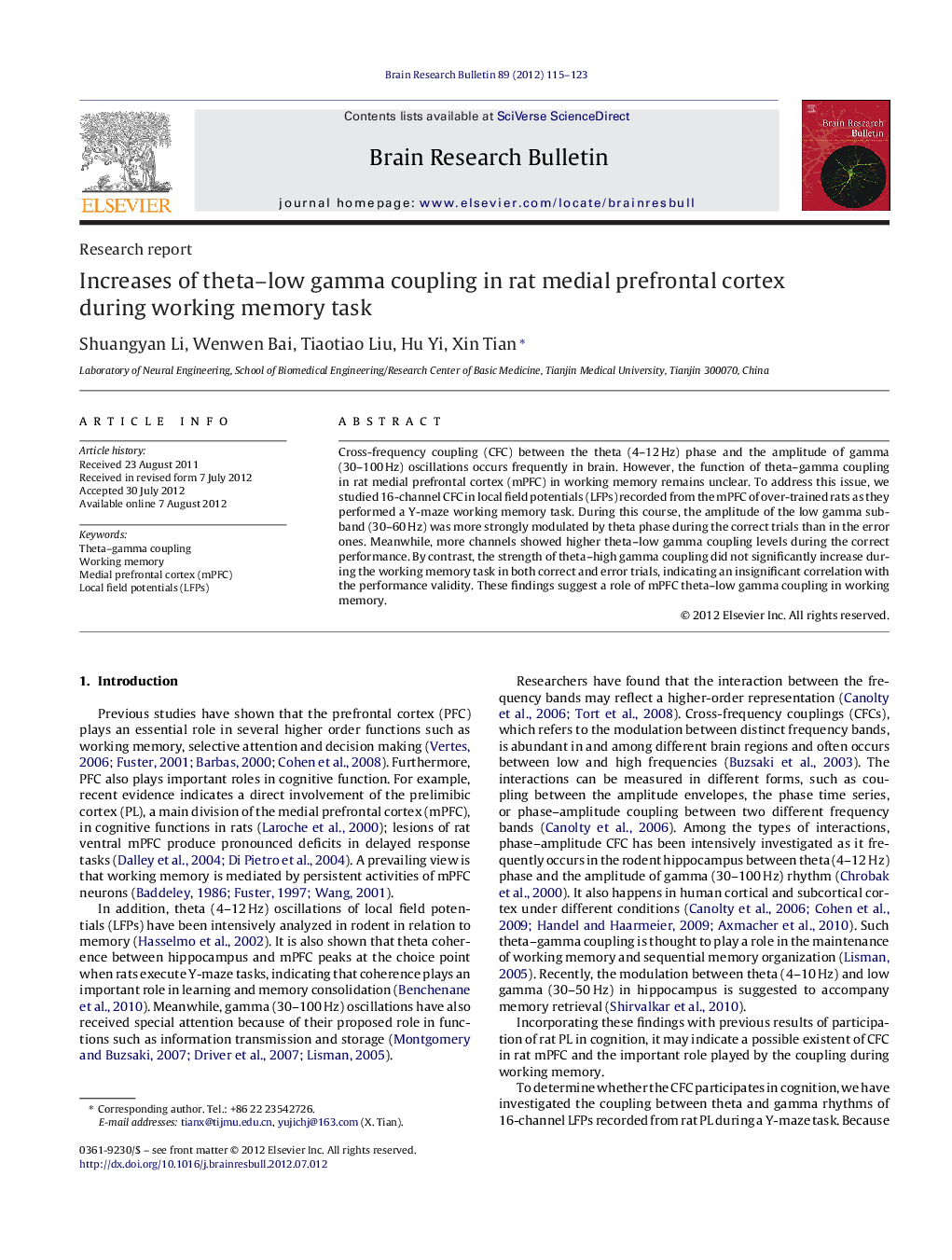| Article ID | Journal | Published Year | Pages | File Type |
|---|---|---|---|---|
| 4318968 | Brain Research Bulletin | 2012 | 9 Pages |
Cross-frequency coupling (CFC) between the theta (4–12 Hz) phase and the amplitude of gamma (30–100 Hz) oscillations occurs frequently in brain. However, the function of theta–gamma coupling in rat medial prefrontal cortex (mPFC) in working memory remains unclear. To address this issue, we studied 16-channel CFC in local field potentials (LFPs) recorded from the mPFC of over-trained rats as they performed a Y-maze working memory task. During this course, the amplitude of the low gamma subband (30–60 Hz) was more strongly modulated by theta phase during the correct trials than in the error ones. Meanwhile, more channels showed higher theta–low gamma coupling levels during the correct performance. By contrast, the strength of theta–high gamma coupling did not significantly increase during the working memory task in both correct and error trials, indicating an insignificant correlation with the performance validity. These findings suggest a role of mPFC theta–low gamma coupling in working memory.
► The dynamic theta–gamma coupling of 16-channel mPFC LFPs were investigated. ► Correlation is shown between theta–LG coupling strength and performance accuracy. ► Theta–HG coupling remained low in all the trials. ► These suggest a possible function role of theta–LG interaction in working memory.
